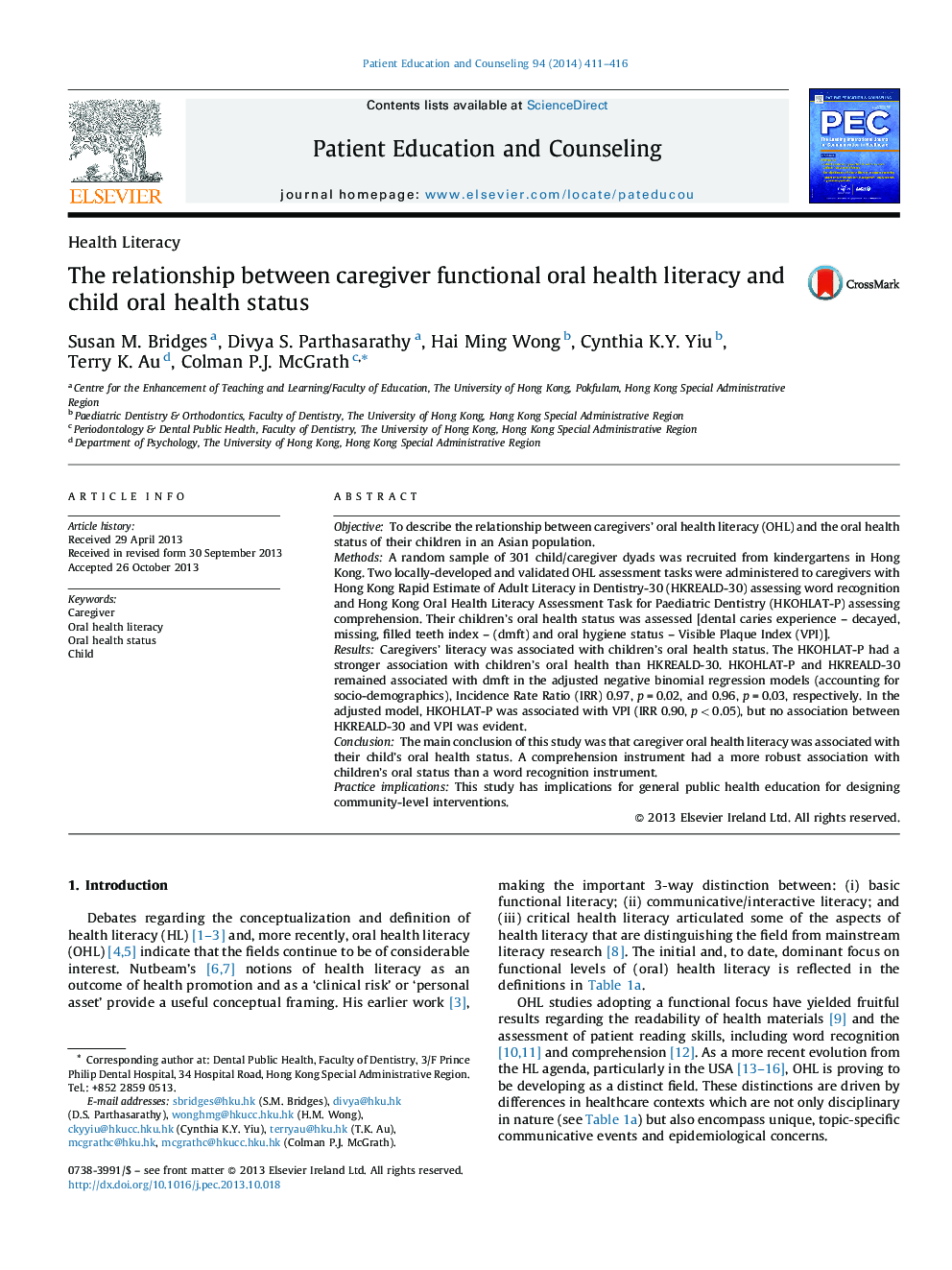| Article ID | Journal | Published Year | Pages | File Type |
|---|---|---|---|---|
| 6154107 | Patient Education and Counseling | 2014 | 6 Pages |
ObjectiveTo describe the relationship between caregivers' oral health literacy (OHL) and the oral health status of their children in an Asian population.MethodsA random sample of 301 child/caregiver dyads was recruited from kindergartens in Hong Kong. Two locally-developed and validated OHL assessment tasks were administered to caregivers with Hong Kong Rapid Estimate of Adult Literacy in Dentistry-30 (HKREALD-30) assessing word recognition and Hong Kong Oral Health Literacy Assessment Task for Paediatric Dentistry (HKOHLAT-P) assessing comprehension. Their children's oral health status was assessed [dental caries experience - decayed, missing, filled teeth index - (dmft) and oral hygiene status - Visible Plaque Index (VPI)].ResultsCaregivers' literacy was associated with children's oral health status. The HKOHLAT-P had a stronger association with children's oral health than HKREALD-30. HKOHLAT-P and HKREALD-30 remained associated with dmft in the adjusted negative binomial regression models (accounting for socio-demographics), Incidence Rate Ratio (IRR) 0.97, p = 0.02, and 0.96, p = 0.03, respectively. In the adjusted model, HKOHLAT-P was associated with VPI (IRR 0.90, p < 0.05), but no association between HKREALD-30 and VPI was evident.ConclusionThe main conclusion of this study was that caregiver oral health literacy was associated with their child's oral health status. A comprehension instrument had a more robust association with children's oral status than a word recognition instrument.Practice implicationsThis study has implications for general public health education for designing community-level interventions.
